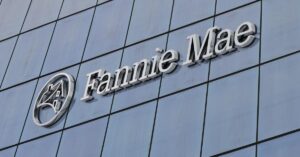Concerns about the national economy and inflation remain widespread, but the latest jobs report from the U.S. Bureau of Labor Statistics gave a signal that the labor market, while dampening, remains tight.
U.S. employers largely matched September hiring expectations, with total nonfarm employment growing by 263,000. A Reuters poll of economists had forecast new hirings at 250,000 for the month, with experts surveyed by Bloomberg projecting 255,000 and Wells Fargo economists predicting 275,000.
The 263,000 new jobs were the fewest added during any month this year and matched the smallest amount of monthly hirings since the beginning of 2021. Monthly job growth in 2022 is running at an average of 420,000 — a solid figure, although down from 562,000 per month last year.
Job gains were largest in the sectors still recovering from the COVID-19 pandemic, with hires in leisure and hospitality (which added 83,000 jobs during September) accounting for almost one-third of all additions. The sector remains below its February 2020 pre-pandemic job level by 1.1 million, or about 6.7%. Health care, meanwhile, added another 60,000 jobs, returning to its pre-pandemic level. Other notable gains were seen in professional and business services (a gain of 46,000 jobs), manufacturing (22,000) and construction (19,000)
Meanwhile, the national unemployment rate receded to 3.5%, a 50-year low. The decline is encouraging on face value, especially as job gains remain solid. But also contributing to the drop in the jobless rate is the stagnating labor force. The civilian labor force edged back by 57,000 — enough to trim 0.1 percentage points from the labor force participation rate. That figure now stands at 62.3%, more than a percentage point below its level before the COVID-19 pandemic.
“Overall, the September jobs report reflects a still-strong labor market that is gradually cooling,” said Odeta Kushi, deputy chief economist at First American Financial Corp. “The Federal Reserve really wants to see the labor supply increase and the September jobs report did not deliver.
“A labor market characterized by high demand but limited supply means upward pressure on wages as employers compete to attract and retain employees, in turn putting upward pressure on inflation. The Fed is watching wage growth for signs of a cooling economy as it works to tame high inflation.”
Indeed, nominal wage growth in September was at 5% year over year, the lowest figure since December 2021. This moderation is theoretically good news against the backdrop of inflation worries, but as Wells Fargo economists Sarah House and Michael Pugliese noted, “it will take much more of a slowdown before Fed officials are convinced that labor costs are returning to a growth path that is consistent with the central bank’s 2% inflation target.”
Given the largely expected stable but unspectacular results of the jobs report, it’s likely that the Federal Reserve will dial up another benchmark rate hike of 75 basis points at its next meeting in early November.






